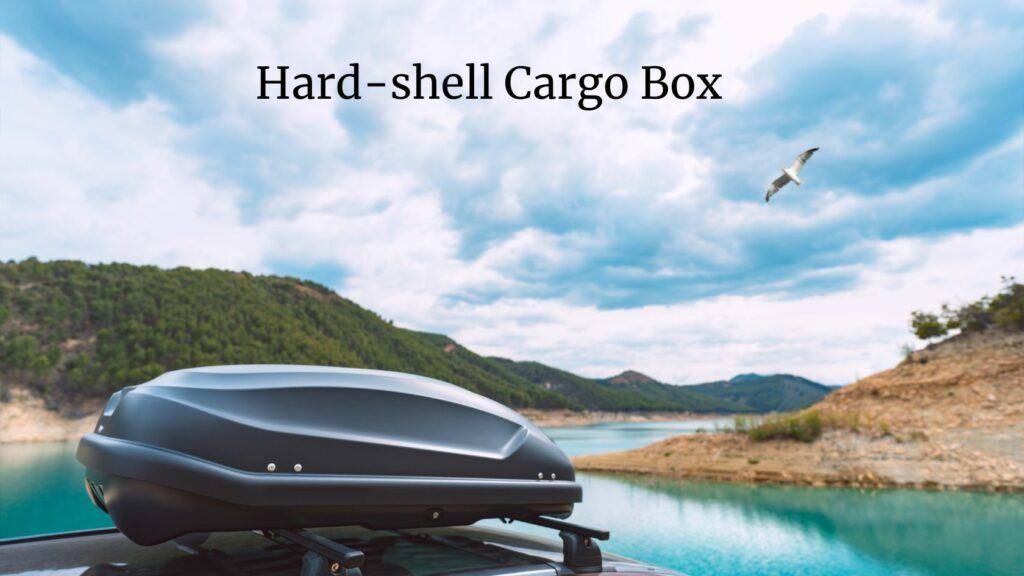
When embarking on a road trip with a rooftop carrier, it’s natural to wonder about how fast can you drive with a rooftop carrier safely.
Rooftop carriers are handy for anyone needing extra storage on road trips. These carriers come in different shapes and sizes, catering to various needs, from transporting camping gear to sports equipment. While they provide much-needed space, understanding their impact on driving is crucial.
You will find the answer to the above question in detail in this blog post. You will also learn about the relationship between rooftop carriers and fuel efficiency, driving dynamics, safety measures, and much more.
How Fast Can You Drive With a Rooftop Carrier?
Many experts suggest that maintaining a speed of 55 to 65 miles per hour is ideal when traveling with a rooftop carrier, as this ensures stability and safety.
Driving above this range can lead to increased wind resistance, which may affect the handling of our vehicle.
Moreover, each rooftop carrier has its specifications regarding weight limits and aerodynamic design that can influence performance.
It’s essential to consider these factors to avoid potential issues on the road. By doing so, we can enjoy our trip while ensuring that our gear remains secure up top.
Common Types of Rooftop Carriers
Rooftop carriers can be roughly divided into three to four categories: hard-shell, soft-shell, cargo baskets, and sports equipment.
The most common types include:
- Rooftop Cargo Boxes (Hard-shell): These are enclosed containers that protect contents from the elements. They are suitable for luggage, sporting equipment, and other items needing protection. Hard-shell carriers are sturdy, and secure, and often come with aerodynamic designs to minimize drag.
- Rooftop Cargo Bags (Soft-shell): Made from durable fabric, these carriers offer flexibility and are often less expensive. They can be compressed when not in use and are great for irregularly shaped items. Soft-shell carriers are lighter and more flexible, making them easier to store when not in use.
- Ski and Bike Racks: These are designed specifically for carrying sports equipment. They allow for easy access and are custom-fitted for various sports gear.
- Cargo Baskets: Open designs that accommodate larger items but lack protection from weather conditions. They often require a cargo net for securing items.
Each type has its benefits and limitations, impacting our choice based on capacity, ease of use, and weather resistance.
Impact on Vehicle Aerodynamics and Handling
Aerodynamics plays a significant role in how these carriers affect your drive. When you attach a rooftop carrier, it changes how air flows over your vehicle, creating additional resistance or drag.
This resistance can reduce your car’s efficiency, making it work harder to maintain speed. The more streamlined the carrier, the less drag it creates, but even the best-designed carriers will have some impact on your car’s performance.
Understanding these dynamics is essential to make informed choices about how and when to use a rooftop carrier. Pay attention to the type of carrier you select, how you load it, and the driving conditions. This knowledge will help you plan better and ensure a smoother, safer drive.
The Relationship Between Rooftop Carriers and Fuel Efficiency
Rooftop carriers can indeed affect your fuel mileage. The primary reason is the added weight and drag, making your car work harder to maintain its speed.
When examining whether roof racks decrease mileage, the answer is typically yes. The degree of impact depends on several factors: the type of vehicle you’re driving, the design of the carrier, and how it’s packed. Boxy, less aerodynamic carriers will generally cause more drag than sleek, streamlined ones.

The weight of your rooftop carrier matters, too. Heavier loads can put more strain on your engine, which translates to higher fuel consumption. Therefore, it’s good practice to pack only what you need and keep the weight as low as possible.
Improving fuel efficiency with a rooftop carrier involves a few strategies. First, ensure the carrier is securely and correctly installed. Poor installation can amplify drag and noise. Secondly, opt for a carrier with an aerodynamic design if possible. Lastly, consider driving at moderate speeds; driving faster increases air resistance exponentially.
While rooftop carriers may decrease fuel efficiency, you can mitigate their impact with careful planning. By paying attention to how you pack, install, and drive with a rooftop carrier, you can save fuel and make your trips more economical.
Driving Dynamics with a Rooftop Carrier
Attaching a rooftop carrier to your car can significantly affect how it handles on the road. The added weight on top changes your vehicle’s center of gravity, which can alter its stability.
This means you might notice differences when steering, especially in sharp turns or while maneuvering through tight spaces.
A heavy roof rack can make your car more top-heavy. This can be particularly felt in windy conditions or when making sudden movements.
Related Read: Can You Use a Car Top Carrier Without a Roofrack?
It’s crucial to be mindful of these changes and adjust your driving accordingly. Slower, more deliberate steering can help maintain control.
One of the most common questions is whether there’s a speed limit when driving with a rooftop carrier.
While there isn’t a universal speed limit, many manufacturers recommend not exceeding 90-110 km/h (approx. 55-68 mph). This recommendation is to ensure safety and to minimize the risk of the carrier detaching or becoming unstable.
Safety on the road is paramount. Always double-check that your rooftop carrier is securely fastened before starting your journey.
Check straps, locks, and attachments regularly, especially during long drives. Keeping an eye on weather conditions is also wise, as strong winds can exacerbate handling difficulties.
Properly distributing weight within the carrier is another vital aspect. Placing heavier items at the bottom can help maintain a lower center of gravity, enhancing stability.
Safety Measures and Precautions for Using Rooftop Carriers
Installing a rooftop carrier correctly is the first step to ensuring a safe journey. Follow the manufacturer’s guidelines to secure it properly. Use all provided attachments, and make sure they are tightly fastened. Don’t cut corners; safety is paramount.
Routine checks and maintenance are indispensable. Inspect the carrier and its connections before every trip.
Look for signs of wear and tear, such as frayed straps or cracked hinges, which can compromise safety. Periodic maintenance helps ensure that everything stays in good working order and any potential issues are addressed promptly.
Concerns about the safety of car roof racks are common, but when used correctly, they can be very safe. The key lies in proper use and regular checks.
It’s important to remember that they are built to hold specific weights and should not be overloaded. Follow the weight limits specified by the manufacturer to avoid unnecessary strain on your vehicle.
Consider investing in a high-quality rooftop carrier with reliable locking mechanisms. Theft and tampering can be concerns, especially during overnight stops. A good lock helps secure your belongings and adds an extra layer of safety.
Also, be aware of the height clearance. Driving with a rooftop carrier means added vehicle height, which can be crucial when navigating underpasses, parking garages, or drive-thru windows. Measure the total height from the ground to the top of the carrier to avoid collisions.
Maximizing Benefits and Minimizing Drawbacks of Rooftop Carriers
Choosing the right rooftop carrier tailored to your needs is essential for maximizing benefits and minimizing drawbacks. Different carriers have different features. Opt for a model that suits your typical load and vehicle type.
For example, hard-shell carriers are excellent for protecting gear from the elements, while soft-shell carriers offer flexibility and lighter weight.

Packing smartly is another way to reduce the negative impacts of using a rooftop carrier. Keep the heaviest items closer to the car’s roof and distribute the weight evenly. This enhances stability and minimizes drag.
Always use packing aids such as straps or nets to secure items tightly, preventing them from shifting during the trip.
Innovative designs in modern rooftop carriers can significantly enhance efficiency. Aerodynamic designs help reduce drag, improving fuel economy and driving stability.
Some manufacturers now offer carriers specifically designed to balance aerodynamics with storage capacity. Researching and investing in these can pay off in the long run.
Conclusion
To make the most of your rooftop carrier, plan your trips with consideration for the added load. Stick to well-maintained roads, avoid extreme weather conditions when possible, and take regular breaks to check the carrier’s condition.
Familiarizing yourself with how to handle the car with the added weight will lead to a safer, more enjoyable driving experience.
Rooftop carriers offer a substantial benefit by providing extra storage space for your travel needs.
When used wisely, they can enhance your travel experience without significantly impacting your vehicle’s performance. Follow these guidelines to make informed decisions and enjoy the road ahead.
